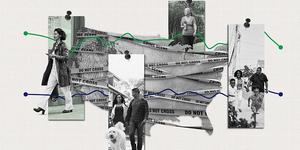Counterfeit goods are now more accessible and affordable than ever, thanks to the growth of technology and improvements in the quality of facilities that manufacture imitation products. The media have reported growing numbers of "super copies" -- counterfeit products whose quality is so good, only an expert can tell the difference.
Consumers may feel they have good reason to buy counterfeit goods -- according to a recent Gallup survey*, two popular reasons for purchasing these products are because consumers can "buy the same quality at a better price," and because the "genuine product price was too high."
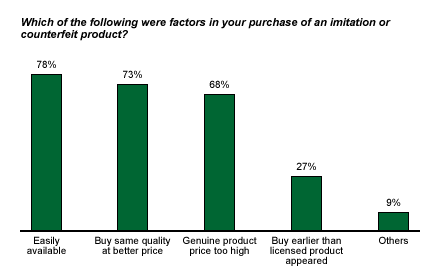
Americans believe groups who manufacture and sell counterfeit goods are motivated by many of the same reasons that consumers choose to buy them. Counterfeiting is viewed as a crime of easy profits and easy production with little or no risk to the producers and sellers.
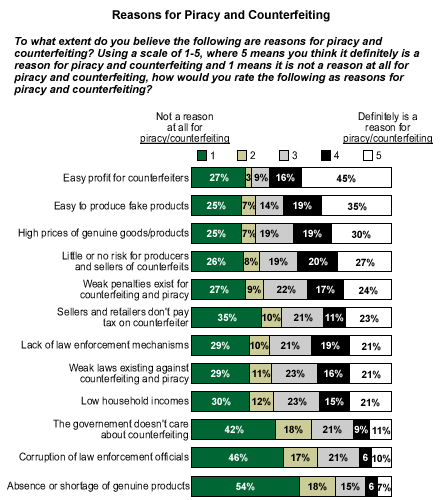
Counterfeiting products may seem to be a victimless crime -- a win-win for both the illicit manufacturer/distributor and the consumer. But could the seemingly innocent purchase of a fake Rolex or an imitation Louis Vuitton handbag lead to a terrorist attack on U.S. soil? As crazy as it sounds, the answer could be yes.
The Role of Organized Crime and Terrorism
According to the Gallup study, Americans believe product importers, organized crime groups, and product exporters are the most likely groups to be involved in the production or distribution of counterfeit products (84% think importers are involved, 83% think organized crime is involved, and 72% feel exporters are involved). In addition to these groups, nearly half of Americans (48%) think terrorist organizations are involved in the production and distribution of imitation and counterfeit goods.
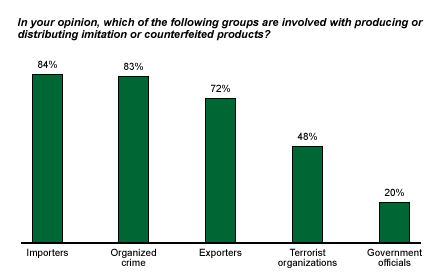
It's no secret that organized crime is involved in the counterfeit trade. But in the wake of the Sept. 11, 2001, terrorist attacks, a much greater focus has been placed on organizations that are using the counterfeit trade to fund international terrorism.
Interpol Secretary General Ronald K. Noble detailed a number of links between counterfeiting and terrorism to a U.S. congressional committee in 2003. He cited specific examples of intellectual property crime and terrorist financing in Northern Ireland, Kosovo, North Africa, and the Middle East. Noble commented, "Law enforcement agencies have to recognize that intellectual property crime is not a victimless crime. Because of the growing evidence that terrorist groups sometimes fund their activities using the proceeds, it must be seen as a very serious crime with important implications for public safety and security."
Assistant U.S. Treasury Secretary Juan C. Zarate recently cited an example of the connection between terrorism and counterfeiting. According to Zarate, Hezbollah leader Assad Ahmad Barakat "worked with Hezbollah and several other terrorist organizations in South America's tri-border area to finance terrorism. The revenue from two of Barakat's companies, strong arm tactics against innocent civilians, and counterfeiting operations were all used to finance terrorist acts."
Although a number of state and federal laws have been enacted to combat counterfeiting, the American public still believes further measures are needed. Nearly three-quarters (72%) of Americans who did not purchase counterfeit goods in the past year believe that counterfeiting and piracy laws should be stricter. Not surprisingly, those who have purchased counterfeit goods are less enthusiastic about stricter laws, although a majority of this group (58%) still thinks laws should be stricter.
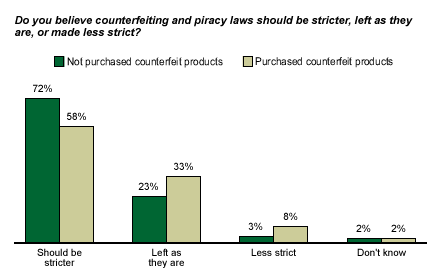
Bottom Line
So what are the best ways to discourage the trade of counterfeit goods? Certainly, the evidence points to increasing the penalties associated with counterfeiting and reducing availability of counterfeit goods. Perhaps of equal or even more importance is educating the public that counterfeiting is not a victimless crime. The most compelling deterrent to the counterfeit industry would be making potential buyers aware that the sellers might be involved in sponsoring or funding terrorist acts or organized crime.
*These results are based on telephone interviews with a randomly selected national sample of 1,304 U.S. adults, aged 18 and older, conducted Jan. 10-20, 2005. For results based on this sample, one can say with 95% confidence that the maximum error attributable to sampling and other random effects is ±3 percentage points. In addition to sampling error, question wording and practical difficulties in conducting surveys can introduce error or bias into the findings of public opinion polls.
